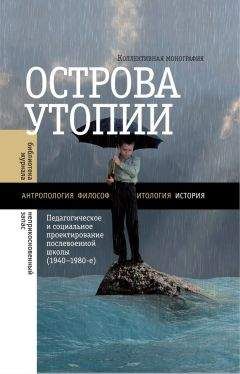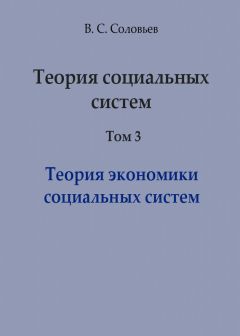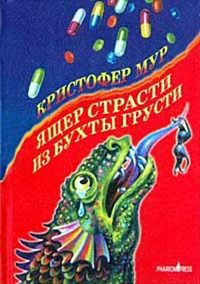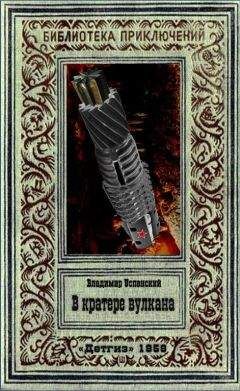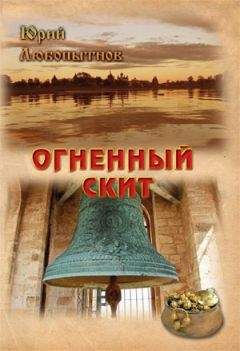As a rule, realized utopias in Soviet conditions usually ended in conflict. The semiotic structure of this conflict is extraordinarily important, since it helps us to see the specific features of both the world of Soviet life in general, and these realized utopias in particular. The breaking points reveal the essence of the social order and allow us to distinguish the clusters of meanings and practices that bind it together. This article focuses on one of these breaking points, which also sheds light on particulars of Soviet schools and the specific features of the behavior of schoolchildren who in one way or another came into contact with utopian communities. Using the metaphor of diglossia, Dimke looks at Soviet social reality as a world in which everyone ceased to be surprised by the functional non-correspondence and even contradiction between words as a part of public ritual and acts in everyday personal life: for the majority of Soviet citizens, these phenomena belonged to separate planes, which co-existed without intersecting. This metaphor helps both to describe the specific features of 1960s – 70s Soviet social reality and to explain the particulars of the conflict between utopian communities and Soviet society as a whole.
Eszter Neumann (King’s College, London), Melinda Kovai (Károli Gáspár University of Reformed Church, Budapest), “The Memory of a Summer Vacation: Jewish Identity Strategies and Elite Socialization in State Socialist Hungary”
Based on a qualitative research project, this chapter explores the collective memory of a private summer resort in State-Socialist Hungary. The authors argue that the biographical narratives of the participants convey a more general message about the social functions of informal social enclaves and the elite socialization processes in State-Socialist Hungary. The analysis specifically explores the connotations of Jewishness in State-Socialist Hungary and the identity construction strategies of Jewish generations raised after the Holocaust, and also discusses the participants’ reflections about the cultural and social position of their families in the context of their “privileged” access to this exclusive pedagogic space.
The struggle for autonomy
Dmitry Kozlov (Nickolai Karamzin fellow, Russian Academy of National Economy and Public Administration, Moscow), “Unofficial groups of Soviet schoolchildren in the 1940s – 60s. Typology, ideology and practices”
The chapter deals with the unofficial teenagers’ “organizations” which appeared in the USSR in the 1940s – 60s. Kozlov analyses how adolescent psychology, Soviet culture (Russian history teaching, fiction and cinema) and official political bodies (Communist Party, Komsomol) influenced the discursive and pragmatic appearance of young people’s political protests. The article also addresses the transformation of official Soviet discourse on adolescents. The conception of the value of puberty dismissed the taboo on it in the early 1960s (C. Kelly). This took shape not only in new initiatives of Soviet educational specialists, but also in the Soviet judicial system. Adolescents were primarily subject to punitive measures other than imprisonment, although for decades before this, they had been treated as adults by the law.
Joakim Landahl (University of Stockholm), “Two utopias: the history of Swedish schoolchildren’s councils”
In this chapter, Landahl investigates the history of schoolchildren’s councils in Sweden in connection with the history of the movement for self-government in high schools. He identifies three basic phases of the movement. During the first phase (1928 – 1952), the predominant function of schoolchildren’s councils was disciplinary. The second phase (1952 – early 1980s) was connected with the revival of various forms of local activity on the part of students and the struggle for their rights at the national level. Finally, the third phase (mid – 1980s – the present day) constitutes a period of steady decline in the political influence and significance of schoolchildren’s councils. Using archival materials, Landahl examines the activity of the schoolchildren’s council at a specific high school during the first phase of the movement; for the second phase, he employs periodicals to elucidate the activity of a nationwide schoolchildren’s organization.
Evgenii Kazakov (University of Bremen), “The schoolchildren’s movement and school self-government in Western Germany”
The historiography of the West German youth protest movement of the 1960s has traditionally focused on the activities of university student groups. But schoolchildren also played an important role in these events. This chapter is about the political work of West German schoolchildren in relation to educational policy questions, in particular, the question of the creation of self-governing bodies in schools. The sources are archival materials of various student groups and political self-government bodies, contemporary media reports and interviews with former activists who participated in the movement between 1950 and the 2000s. There have been some very widely publicized studies of the history of the student movement in the 1960s – 70s; the later decades remain largely unexplored.
After the Second World War, the Western Allies insisted on the creation of self-government at the level of individual schools, which was hoped to lead to a “democratic transformation” of German youth. By choosing class representatives, students would learn democratic processes in practice. However, the object of the class representatives in the postwar years was first and foremost to steal coal for heating the classrooms. Essentially, however, the joint responsibility or co-administration of the pupils (SMV, Schülermitverantwortung or Schülermitverwaltung) was seen as a bonus for schoolchildren, rather than a representation of their interests. The elections had to be confirmed by the school principal, and all attempts to link SMV-structures across schools were suppressed. In the 1960s, the old SMV conception, based on the idea of “non-conflicting partnership” between teachers and students, was being increasingly criticized by education experts. Around 1966 – 67, there was an explosion of uncontrolled student activities, initially sparked by the issue of censorship of the student press.
Representations
Vadim Mikhailin (Saratov State University, Saratov, Russia), Galina Belyaeva (Saratov State Alexander Radishchev Art Museum), “Soviet ‘school film’: birth of a genre”
This chapter is the first part of a bigger work entitled “Soviet ‘school film’: between the Communist project and the late Soviet utopia of privacy,” which has yet to be published. We propose that the “school-film” genre appeared in the course of updating and refurbishing the stock of ideologically-pointed means by which Soviet elites constructed a set of projective realities acceptable for their primary audiences and exploitable in their managing practices – as a part of the last full-scale Soviet mobilization project known as “the Thaw.” At its birth, the genre was aimed mainly at inculcating the already customary collectivist models of behavior into the audience, as well as at discrediting (no less customary) of any off-public micro-group contexts. In this context, however, these actions were performed using somewhat finer strategies, relying on attempts to build personally oriented empathic ties: “sincerity” (which was to become a legendary shibboleth not only for school films but for all of Thaw culture) basically lay in imitating private empathy regimes. The primary audience of school films was, naturally, teenagers, who were seen as the most appropriate social stratum to be targeted by the new mobilization strategies. The article traces the preconditions that gave rise to school film, as well as the main stages of its early (1960s) development.
This collection is concluded with the afterword written by a well-known Russian pedagogue, educational theorist and journalist, Dr. Evgeny Yamburg (The Russian Academy of Education and Educational Centre # 109, Moscow).
Здесь особенно характерен апологетический, изобилующий фактическими ошибками текст журналиста Максима Соколова «Парадоксальный эффект советской школы», написанный в 2003 году и скопированный в Интернете на многочисленных сайтах «лучших рефератов» (см., например: http://n-t.ru/tp/ob/pe.htm). В некритически-одобрительном отношении к советской школе могут сходиться радикальные левые, поклонники сильного государства, этнонационалисты и православные фундаменталисты: Тарасов А. Бритоголовые. Новая протофашистская молодежная субкультура в России // Дружба народов. 2000. № 2; Мартынюк В. Либеральные реформы убивают российское образование // Сайт Km.ru. 2012. 29 ноября (http://www.km.ru/v-rossii/2012/11/29/obrazovanie-v-rossii/698450-liberalnye-reformy-ubivayut-rossiiskoe-obrazovanie); Тишков М. Налог на образование. Выступление на Всероссийском Родительском съезде // Сайт Православие.ру. 2013. 14 февраля (http://www.pravoslavie.ru/smi/59461.htm); Леонтьев М. Прагматизация от Ливанова: деградация образования в отсутствие политики // Блог М. Леонтьева на сайте odnako.org. 2013. 14 апреля (http://www.odnako.org/blogs/pragmatizaciya-ot-livanova-degradaciya-obrazovaniya-v-otsutstvie-politiki/).
Беседа тележурналиста В. Познера и министра образования и науки РФ Д. Ливанова на Первом канале российского телевидения (расшифровка: минобрнауки.рф/пресс-центр/3166, опубликована 18 марта 2013 г.); доклад Всемирного банка об итогах модернизации образования в РФ, подготовленный в 2004 году (Кэннинг М. с соавт. Модернизация российского образования: достижения и уроки / Пер. с англ. [перев. не указан] // http://www-wds.worldbank.org/external/default/WDSContentServer/WDSP/IB/2007/02/01/000020439_20070201135028/Rendered/PDF/385220RU0Moder1f0education01PUBLIC1.pdf).
Константинов Н.А., Медынский Е.Р. Очерки по истории советской школы РСФСР за 30 лет. М., 1948; Королев Ф.Ф. Советская школа в период социалистической реконструкции. М., 1959; Королев Ф.Ф., Корнейчик Т.Д., Равкин З.И. Очерки по истории советской школы и педагогики. 1921 – 1931. М., 1961; Очерки истории школы и педагогической мысли народов СССР (1917 – 1941) / Под ред. Н.П. Кузина, М.Н. Колмаковой, З.И. Равкина. М.: Педагогика, 1980; и мн. др.
См., например, известную книгу западногерманского историка Оскара Анвайлера: Anweiler O. Geschichte der Schule und Pädagogik in Russland vom Ende des Zarenreiches bis zum Beginn der Stalin-Ära. Berlin, 1964. Впрочем, и отечественные, и зарубежные исследователи советского периода по разным причинам, но почти в равной степени были чрезвычайно ограничены в доступе к архивным материалам.
Среди немногочисленных исключений: Школа советского общества: опыт политической истории. По материалам Нижегородской области. Учеб. пособие по курсу «История образования» / Под ред. И.В. Берельковского, Э.М. Фильченковой. Н. Новгород: Нижегородский гуманитарный центр, 1997; Ходырев А.М. Советская школа 50-х – середины 60-х годов как социокультурный феномен. Ярославль: Изд-во ЯГПУ, 2004; Молоков Д.С. Тенденции развития советской общеобразовательной школы второй половины 60-х – первой половины 80-х гг. Ярославль: Изд-во ЯГПУ, 2004.
См., например: Шакиров Р.В. Школа и общество. Системно-концептуальный анализ реформ образования в России в ХХ веке. Казань, 1997; Holmes L.E. Stalin’s School. Moscow Model School No. 25. 1931 – 1937. Ithaca, 1999; Мусиенко Н., Ватлин А. Репрессированная школа. История немецкой школы им. Карла Либкнехта в Москве. 1924 – 1938. М.: РОССПЭН, 2014.
Livshiz A. Pre-Revolutionary in Form, Soviet in Content? Wartime Educational Reforms and the Postwar Quest for Normality // History of Education. 2006. Vol. 35. No. 4 – 5. P. 541 – 560; Ewing Thomas E. A Precarious Position of Power: Soviet School Directors in the 1930s // Journal of Educational Administration and History. 2009. Vol. 41. No. 3. P. 253 – 266; Idem. Separate Schools. Gender, Policy, and Practice in Postwar Soviet Education. DeCalb: Northern Illinois University Press, 2010; Расписание перемен. Очерки истории образовательной и научной политики в Российской империи – СССР (конец 1880-х – 1930-е годы) / Под ред. А.Н. Дмитриева. М.: Новое литературное обозрение, 2012 (см. особ. статью Е.М. Балашова, с. 435 – 494). Одним из первых наметил новое направление исследований Э.Д. Днепров: Днепров Э.Д. Четвертая школьная реформа в России. М.: Интерпракс, 1994; Он же. Современная школьная реформа в России. М.: Наука, 1998. В 1986 году уже упомянутый Анвайлер в соавторстве с Фридрихом Кюбартом издал небольшую брошюру по истории «хрущевской» образовательной реформы 1958 года: Anweiler O., Kuebart F. Die sowjetische Schul– und Berufsbildungsreform: Vorbereitung, Schwerpunkte, Beginn der Realisierung. Köln: Bundesinst. für Ostwiss. u. Internat. Studien.
